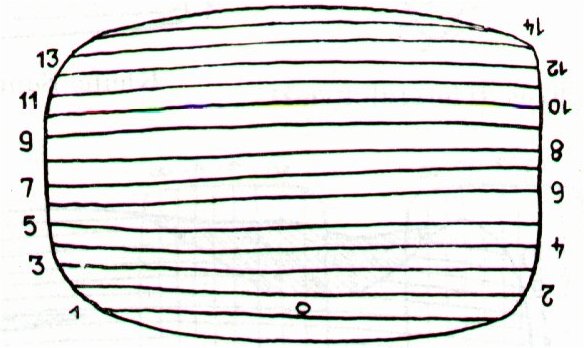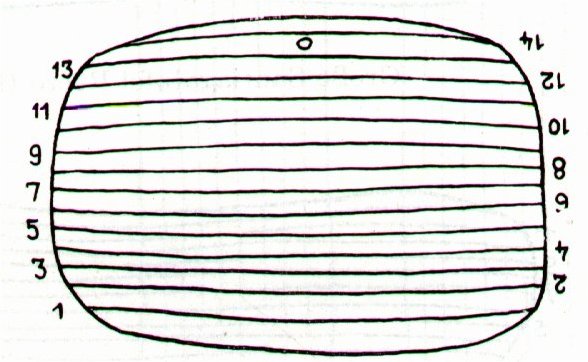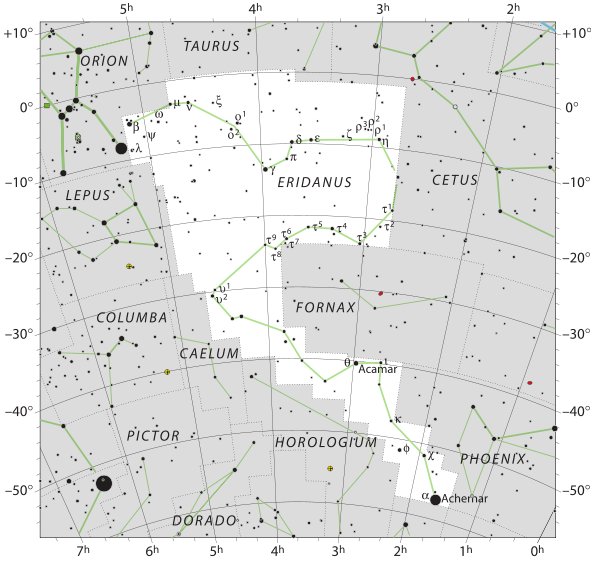I suggest the sequential flow in time of the heliacal stars went on in parallel with the glyphs with no interruption for when the text continued from the end of the upside down line a14 on side a to right side down line b1 at the beginning of side b of the tablet. Time did not stop and there was no discontinuity from the top of side a to the bottom of side b.   The heliacal reading of the glyphs apparently continued all through the text on side a, but not necessarily on to side b. This is another matter because I think there should be some qualitative difference between side a and side b. I have suggested the last glyph on side a represented April 16:
My arguments lead to the conclusion that April 17 ought to be at the beginning of side b:
The Rogo type of 'turtles' is over and Cb1-2 looks precisely as the pair before glyph 384:
After having adjusted Polaris (and Baten Kaitos) to be at the last glyph on side a, because of February 29, we can see that changing from an ordinary year to a year with 366 days also has caused the midnight culminations of Regulus and Sadalmelik to be close together in my representation. Furthermore, Achernar (α Eridani) should now be considered when trying to understand the manu kake ('climbing bird') glyph (*Ca14-26 with a dot in front). 14 * 26 = 364.
Achernar was rising closely after Phoenix, as if it had been generated by the fire bird. On Hawaii the Rogo figure 'played the part of sacrifice'. He was defeated and 'dismembered' - loosing his arms and legs - a gesture which probably meant robbing him of all his fertility members: ... in the ceremonial course of the coming year, the king is symbolically transposed toward the Lono pole of Hawaiian divinity ... It need only be noticed that the renewal of kingship at the climax of the Makahiki coincides with the rebirth of nature. For in the ideal ritual calendar, the kali'i battle follows the autumnal appearance of the Pleiades, by thirty-three days - thus precisely, in the late eighteenth century, 21 December, the winter solstice. The king returns to power with the sun. Whereas, over the next two days, Lono plays the part of the sacrifice. The Makahiki effigy is dismantled and hidden away in a rite watched over by the king's 'living god', Kahoali'i or 'The-Companion-of-the-King', the one who is also known as 'Death-is-Near' (Koke-na-make). Close kinsman of the king as his ceremonial double, Kahoali'i swallows the eye of the victim in ceremonies of human sacrifice ... The 'living god', moreover, passes the night prior to the dismemberment of Lono in a temporary house called 'the net house of Kahoali'i', set up before the temple structure where the image sleeps. In the myth pertinent to these rites, the trickster hero - whose father has the same name (Kuuka'ohi'alaki) as the Kuu-image of the temple - uses a certain 'net of Maoloha' to encircle a house, entrapping the goddess Haumea; whereas, Haumea (or Papa) is also a version of La'ila'i, the archetypal fertile woman, and the net used to entangle her had belonged to one Makali'i, 'Pleiades'. Just so, the succeeding Makahiki ceremony, following upon the putting away of the god, is called 'the net of Maoloha', and represents the gains in fertility accruing to the people from the victory over Lono. A large, loose-mesh net, filled with all kinds of food, is shaken at a priest's command. Fallen to earth, and to man's lot, the food is the augury of the coming year. The fertility of nature thus taken by humanity, a tribute-canoe of offerings to Lono is set adrift for Kahiki, homeland of the gods. The New Year draws to a close. At the next full moon, a man (a tabu transgressor) will be caught by Kahoali'i and sacrificed. Soon after the houses and standing images of the temple will be rebuilt: consecrated - with more human sacrifices - to the rites of Kuu and the projects of the king. | ||||||||||||||||||||||||||||||||||||||||||||||||||||||||||||||||||||||||||||||||||||||||||||||||||||




